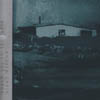Andrew Chalk, "Blue Eyes of the March"
 Imust confess that Andrew Chalk has been scoring my ritual eveningrelax/unwind "me-time" almost exclusively for the last few weeks. The newest release is exceptionally fantastic, reminding me why peoplepay outrageous amounts for his releases at online auctions.
Imust confess that Andrew Chalk has been scoring my ritual eveningrelax/unwind "me-time" almost exclusively for the last few weeks. The newest release is exceptionally fantastic, reminding me why peoplepay outrageous amounts for his releases at online auctions.There's an amazing attention to aesthetics that Andrew Chalkundeniably pays for each release with his name on it. It starts withthe music and continues through the cover artwork, packaging, andpresentation.
The first part of Blue Eyes of the March is a 20 minute longpiece which sounds like it was created by a prepared guitar, tuned onlyto play a limited number of pre-determined notes as they're quietlyplucked and resonate for long stretches. The tones resemble some ofthose on the Buddha Box, and while the effect is similarlyserene and meditative, there's a number of differences that areinherent with the basic natures of the medium. The biggest advantage Ithink is the ability to amplify the sound and be completely bathed init, which is something Chalk's music always lends itself to. Chalk'smusic is not on a loop, either, and each piece makes a gradualevolution over the time.
The second part is an absolutely heavenly 31 minute long piece.Unlike the first part, this one sounds like it was created by piano,yet it echoing in a similar way to the other. The piano tones andtreatment are almost reminiscent of some 20+ year old Harold Budd workbut while the set notes are very rigid, Chalk's playing is quite fluid.High pitched tones and low pitched tones add colorization but it's hardto tell if they are being created by other sources or if they'reserendipitous side-effects. Either way, the combination is hypnotic andpractically time-bending: I never realize that 31 minutes have passedwhile entrenched in this recording.
For the packaging, Chalk continues on in the ways of the first threereleases on Faraway Press: a rigid cardboard sleeve with no wordsmucking up the artwork; an inner baggie for the disc; an obi with thealbum title; all contained in a piece of resealable plastic to protectthe cover. I've had this CD at work and at home and in both places,friends who usually have nothing to do with the weird music I listen towere drawn in to the blue cover and sturdy packaging grabbing it andgiving it a close examination. It's refreshing probably for them to seemusic treated as artwork and not as a commodity with UPC symbols andFBI warnings trashing the cover. For me, I'm happy to have theopportunity to listen to Blue Eyes of the March whenever I want as I still can't seem to afford some of the more elusive releases.
samples:



